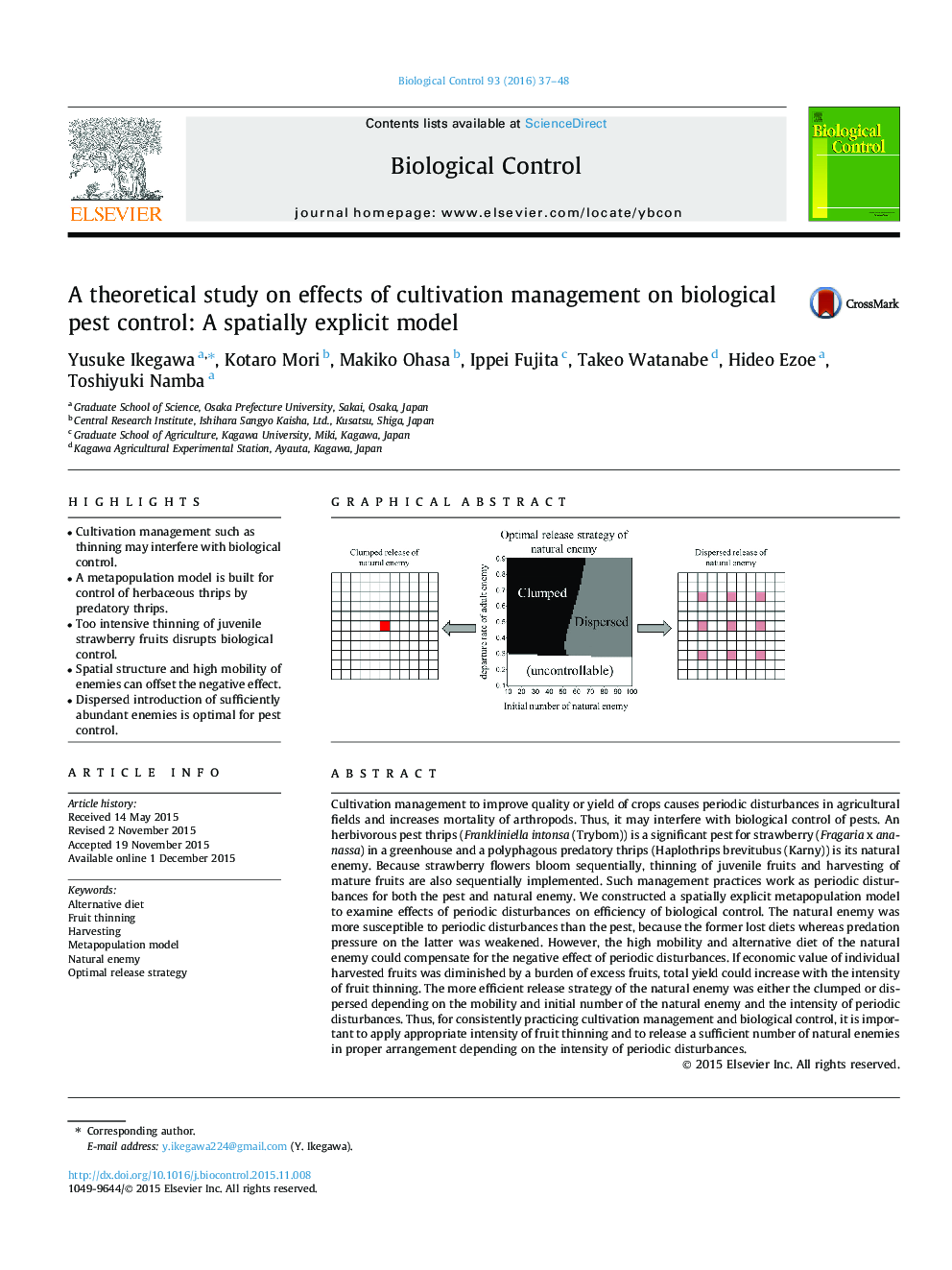| Article ID | Journal | Published Year | Pages | File Type |
|---|---|---|---|---|
| 4503652 | Biological Control | 2016 | 12 Pages |
•Cultivation management such as thinning may interfere with biological control.•A metapopulation model is built for control of herbaceous thrips by predatory thrips.•Too intensive thinning of juvenile strawberry fruits disrupts biological control.•Spatial structure and high mobility of enemies can offset the negative effect.•Dispersed introduction of sufficiently abundant enemies is optimal for pest control.
Cultivation management to improve quality or yield of crops causes periodic disturbances in agricultural fields and increases mortality of arthropods. Thus, it may interfere with biological control of pests. An herbivorous pest thrips (Frankliniella intonsa (Trybom)) is a significant pest for strawberry (Fragaria x ananassa) in a greenhouse and a polyphagous predatory thrips (Haplothrips brevitubus (Karny)) is its natural enemy. Because strawberry flowers bloom sequentially, thinning of juvenile fruits and harvesting of mature fruits are also sequentially implemented. Such management practices work as periodic disturbances for both the pest and natural enemy. We constructed a spatially explicit metapopulation model to examine effects of periodic disturbances on efficiency of biological control. The natural enemy was more susceptible to periodic disturbances than the pest, because the former lost diets whereas predation pressure on the latter was weakened. However, the high mobility and alternative diet of the natural enemy could compensate for the negative effect of periodic disturbances. If economic value of individual harvested fruits was diminished by a burden of excess fruits, total yield could increase with the intensity of fruit thinning. The more efficient release strategy of the natural enemy was either the clumped or dispersed depending on the mobility and initial number of the natural enemy and the intensity of periodic disturbances. Thus, for consistently practicing cultivation management and biological control, it is important to apply appropriate intensity of fruit thinning and to release a sufficient number of natural enemies in proper arrangement depending on the intensity of periodic disturbances.
Graphical abstractFigure optionsDownload full-size imageDownload as PowerPoint slide
